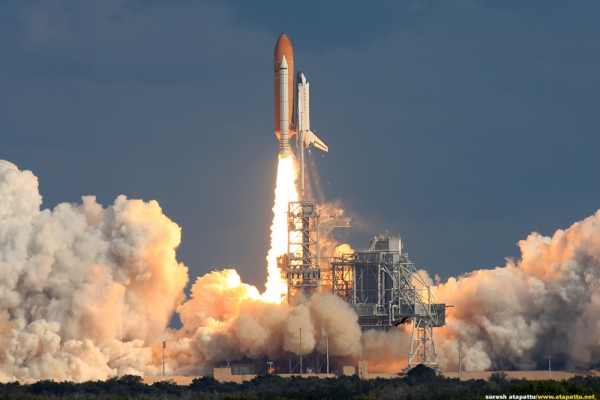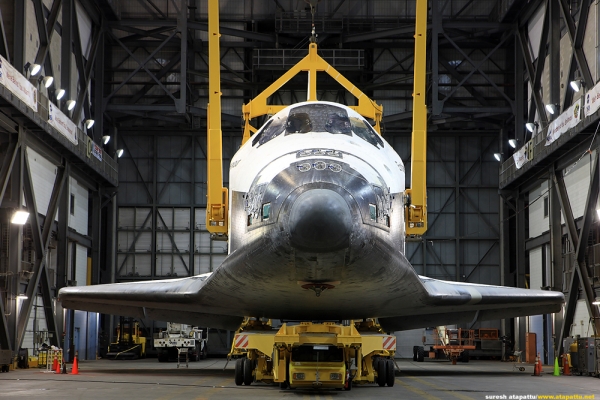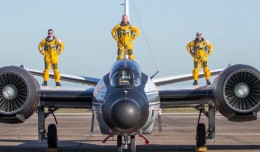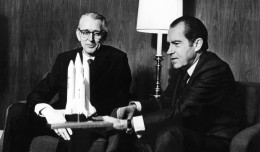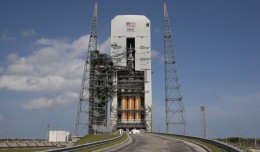The era of the Space Shuttle program is about to end. After 30 years in operation (1981-2011), the program is within months of its final countdown. Planning for the shutdown, dismantling and disposal of the infrastructure, hardware and operations have been in full swing for the past few years and with the dawn of 2011, these operations have reached a steady and determined final phase. The anticipation of the disposal of the treasured items of the program has sparked a fierce struggle among private and public institutions wanting a piece of history.
The biggest battle has revolved around what will become of the orbiters themselves. As many as 21 museums are vying to obtain a shuttle. The public affinity and the identification with the orbiters make them financial gold mines to the institutions receiving them. NASA’s price tag is approximately $28.5 million to “safe” each orbiter, clean it up to a display standard and delivery to a nearby runway. The orbiters will remain the property of the US government and the display standards are tightly controlled to include climate controlled environments and access control to the inside. The long term preservation and availability for forensic inspection by NASA, if the need arose, for future designs is another key reason for the tight regulation.
The orbiter Discovery (OV-103), is currently undergoing “down processing” after her final mission, STS-133, concluded in February. All systems determined to be hazardous and incapable of surviving without maintenance are being stripped and replaced with inert hardware. Her engines have been removed. Eventually, she will become a flightless spacecraft with clipped wings that will be shipped atop of NASA’s 747 Shuttle Transporter aircraft to Washington-Dulles airport. At Dulles, she will be wheeled over to the Smithsonian’s National Air and Space Museum (NASM) Steven F. Udvar-Hazy Center for permanent display.
With Discovery off the list of available orbiters, the remaining three are Endeavour (OV-105), Atlantis (OV-104) and Enterprise (OV-101). Because Enterprise was a prototype that never actually flew to space, it does not hold the same public appeal of the others. The fiercest competition is centered around Endeavour and Atlantis.
NASA administrator Charles Bolden will announce the final resting places for all the shuttles on Tuesday, April 12th—the 30th anniversary of the first shuttle flight (STS-1) by Columbia in 1981. It appears that he is assuming this position to insulate the Obama administration from any political fallout. There are some strong contenders with perfect credentials to receive the orbiters. However, political influence and back room dealing cannot be ruled out. The three first tier contenders due to their operational history, institutional connections and leadership to the Space Shuttle program are:
NASA-Kennedy Space Center, Orsino, Florida: The home of launch control and the operation orbiters have, perhaps, the most credentials for receiving an orbiter. It is widely acknowledged in internal (but public) documents that one scenario has the work flow of Endeavour has her being retired to the Kennedy Visitor Center. Currently, there is a vibrant and active public visitor center that displays the entire range of the US space program from inception.
NASA-Johnson Space Center, Houston, Texas: The home of mission control and the NASA astronauts are equally strong contenders for an orbiter. With the existing visitor center and space artifacts, this would be strong and natural candidate. Also, a number of influential politicians sitting on space committees that have oversight of the NASA budgets represent Texas and Florida, and there is strong bipartisan support for a shuttle to go to each state.
US Air Force Museum, Dayton, Ohio: The USAF has been the forgotten father of the Shuttle program. The shuttle was planned as having a large defense mission capability hence the interest and support of the USAF. While this support cooled after the tragedy of Challenger, the USAF has had interest and supported the mission of the program. The USAF would like Atlantis as she has flown the most defense missions.
In addition to these front-runners, there are other institutions with considerable star power support (politicians, ex-astronauts and civic leaders) as well as financial resources. Among them: the Intrepid Sea-Air-Space Museum in New York; the Adler Planetarium in Chicago; the U.S. Space & Rocket Center in Huntsville, Alabama; and the Museum of Flight in Seattle.
It will be very interesting as NASA Administrator Bolden chooses the final destinations for the Space Shuttle orbiters. The $28.5 million question: Will a “dark horse” candidate arise?




